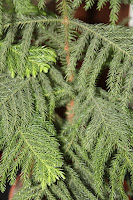Ruellia Short or Tall

I n January, National Geographic reported that in order to ensure pollination, flowers make their nectar sweeter when they hear bees buzzing. “… within minutes, the plants temporarily increased the concentration of sugar in their flowers’ nectar. In effect, the flowers themselves served as ears, picking up the specific frequencies of bees’ wings while tuning out irrelevant sounds like wind.” ( https://on.natgeo.com/ 2Mi6LLl ) When you observe bees flocking to the large flowers on native plants such as Mexican Petunia, think about the sound of the flowers humming to make that happen. Ruellias are beginning to bloom now when many other plants have surrendered to summer’s heat. We have the 14-inch tall purple Mexican Petunia and the dwarf pink R. britannia. Wild Petunia, Ruellia humilis, as it is often called, was first identified and named by the plant explorer Thomas Nutall. The dwarf Katie/Southern Star series thrives as potted plants for zone 8 and are sold as annuals. But, whe





